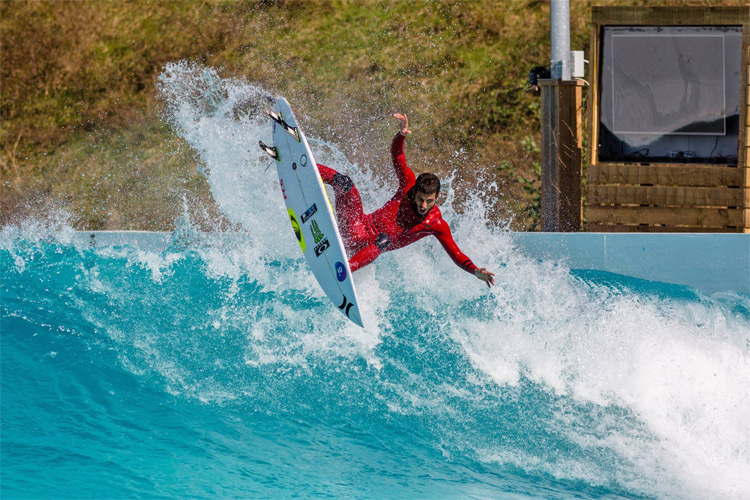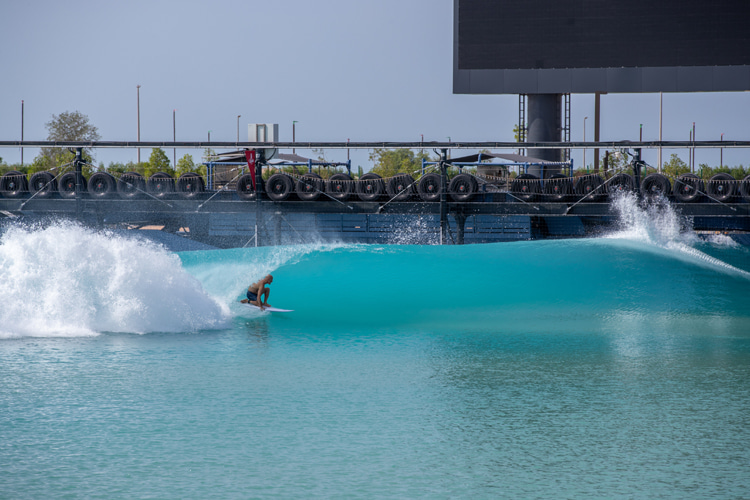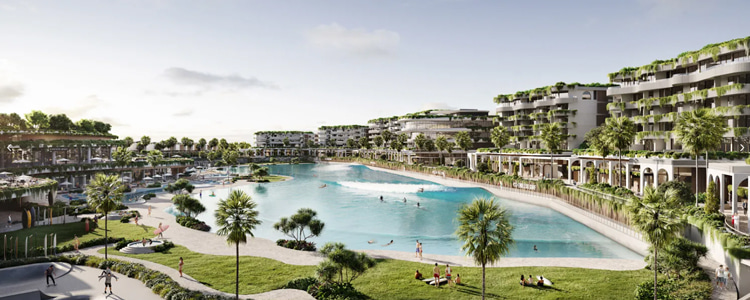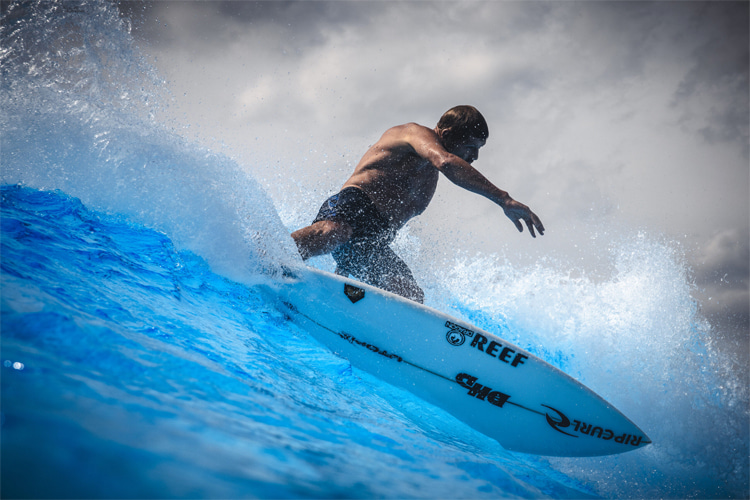The rapid expansion of the world's wave pool web and the diversification of synthetic wave-generating technologies are creating investment opportunities for professional surfers.
They're popping like mushrooms in places where water is scarce, thousands of miles away from the coastline, or in high-density surf zones.
Wave pools are the only truly dynamic sector within the surf industry, with the surfwear and the board and equipment segment struggling to stay afloat.
Artificial waves are already gathering billions of dollars in private funds channeled toward the construction of new inland surfing parks yearly.
The number of projects announced for anywhere in the world is also increasing each quarter.
With more, there are more and more side businesses attached to them: restaurants, surf shops, cafeterias, surf rentals, surf lessons, AI video capture, beach clubs, bungalows, sports medicine, hotels, water and theme parks, event areas, conference centers, golf courses, etc.
Ultimately, the admission ticket to the wave pool itself is increasingly less relevant within the whole revenue stream chart.
The more complex these surf centers become, the larger they grow in total dedicated area.
Eventually, they're nearly small towns or private communities with their own dynamics and internal social and economic characteristics where thousands of people converge every day.
The idea is not new, even though many grand failures with similar projects still haunt many city halls.

21th-Century Surf
Wave pools were not "invented" by Kelly Slater. They are actually quite old, and the first prototypes date back to the 19th century.
Nevertheless, Slater did indeed pioneer the modern concept of surfing in enclosed water bodies.
The Floridian secretly invested and developed his vision of catching waves in a swimming pool-like structure.
He spent over a decade testing several methods for producing a non-oceanic rideable wave in secrecy until revealing his version 1.0 model in 2015.
Almost simultaneously, Josema Odriozola and Karin Frisch designed, tested, and trialed their own wave pool system, Wavegarden.
Suddenly, creating surf away from the shore was the logical investment step for many real estate developers across the planet.
Soon, the interest in this giant niche within the surf industry ignited the brains of many engineers and inventors, who stepped up their game and presented their wave pool technology.
The competition for the best rideable artificial wave intensified; the private funds had money to invest, and the public interest was still far from saturated.
The different projects only needed high-profile personalities, and who better than professional surfers to market dream barrels and custom-made air sections?

Pro Surfers Turned Investors and Ambassadors
Kelly Slater was the first professional surfer to promote a wave pool technology - his own, Kelly Slater Wave Co. (KSWC).
Surf Ranch, KSWC's original site in Lemoore, California, was eventually sold to the World Surf League (WSL).
In its early days, Wavegarden also invited many pro surfers to try out their human-made waves in the test facility located in Zarautz, Spain.
The moment their first wave pools were built, each site signed partnerships with top surfers, including world champions.
The local venues took the most of each athlete's reach online to boost their customer base and yearly membership figures.
Soon, you could spot a pattern. High-profile surfers were the ones getting hired as ambassadors or brand promoters for each wave pool project.
Apart from Slater, Mark Occhilupo was one of the first world champion surfers to become a (minority) shareholder in a wave pool.
The 1999 ASP World Tour champion got involved with Surf Lakes and put his money into the Australian wave-generating technology.
Gabriel Medina and his Kauai Ventures partnered with WhiteWater's Endless Surf to develop wave pool projects across Brazil.
Kanoa Igarashi also joined the wave pool investors club with a six-figure contribution to the $30-million facility, Surf Parque Óbidos in Peniche, Portugal.
Wave pools are capital-intensive. They're not just another surf apparel company or local brewery where to throw some savings.
Mick Fanning is a well-known world surfing champion turned investor.
He has diversified his venture portfolio and is only getting into businesses he believes in deeply.
In 2024, the Australian announced his participation in the creation of the Palm Valley Gold Coast Resort, a $300-million multidisciplinary project featuring, among 200 apartments and golf, an Endless Surf wave pool.
The Fall of the Competitive Surfing Dream?
The trend is likely to continue in the following decades, and a few questions arise.
Will professional surfing become the trampoline to business careers? Is pro surfing sufficiently attractive after you're 30 or 35? Could competitive surfing start losing its stars too early?
One thing we know: nearly all professional surfers, men and women, have set up alternative revenue income streams.
They're increasingly monetizing their online presence, creating video content, gathering off-surfing sponsors, endorsing events, and serving as ambassadors for localized wave pool projects, etc.
You could picture a scenario where putting on a jersey is only a means to a much more grandiose life as entrepreneurs and business people.

Ghost Wave Pools
As we witness the growth of mega real estate projects featuring wave pools, we will also observe unsuccessful and eventually bankrupt ones.
Pouring money into extravagant, larger-than-life tourism and wellness developments comes with a price.
The lack of financial sustainability could lead to a surge of post-apocalyptical ghost facilities abandoned by owners, investors, and local councils.
We've seen it with theme parks and water parks since they were built in the 20th century, but also with more recently built wave pools.
Seagaia Ocean Dome in Japan, the NLand Surf Park in Texas, and Surf Snowdonia in Wales closed down before their natural life expectancy.
Although the wave pool market is far from saturated, there will be a moment when previously healthy artificial surf centers will cease being viable.
Also, new technologies will replace outdated, old wave-generating systems, and the price to keep a business up-to-date will not be compatible with the original revenue stream paradigm.
And when that moment comes, concrete is all that will remain.
Words by Luís MP | Founder of SurferToday.com
